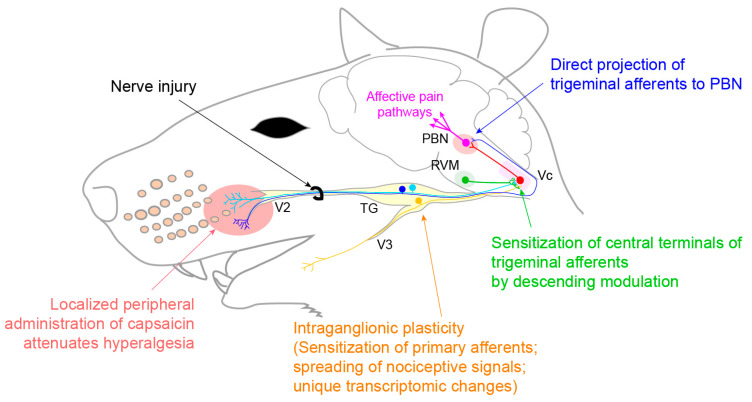Figure 4.
Mechanistic contribution of the nociceptive primary afferents to chronic orofacial neuropathic pain. Chronic constriction nerve injury (CCI) of the infraorbital nerve (ION), a part of V2, induces widespread unique transcriptomic changes in TG. The spreading of a nociceptive signal between the V2 and V3 neurons within TG may contribute to extraterritorial hyperalgesia. Central terminals of trigeminal afferents within the trigeminal subnucleus caudalis (Vc) are sensitized by descending facilitatory inputs from the rostral ventromedial medulla (RVM). A subset of trigeminal afferents directly projects to the parabrachial nucleus (PBN), which is a hub of affective pain pathways, without relaying at the Vc. The localized administration of capsaicin—which selectively defunctionalizes nociceptive afferents—to orofacial tissues attenuates long-lasting orofacial neuropathic pain, both in humans and rodents.

